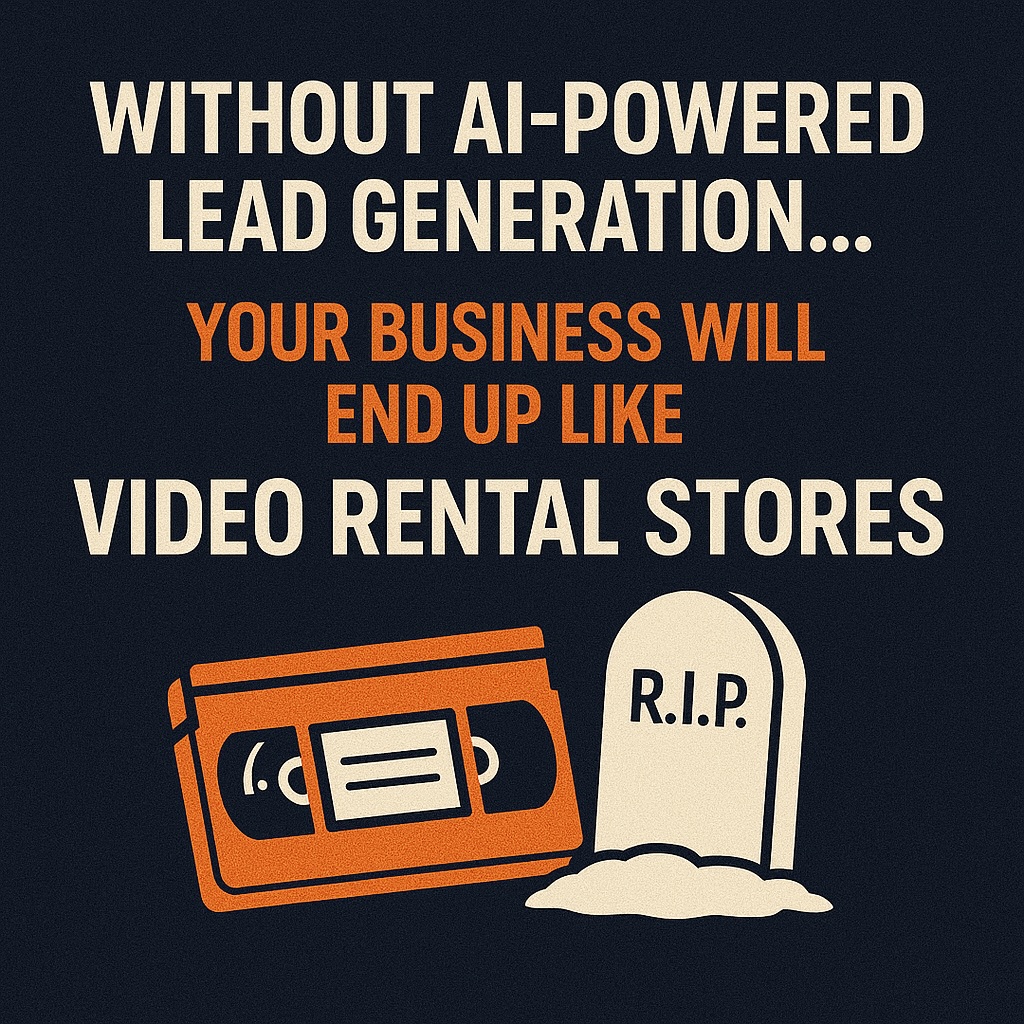
Why Fear Marketing Fails AI Innovation
Why Fear Marketing Fails AI Innovation
I saw an ad recently that declared: "Without AI-powered lead generation, your business will go back to video rental stores." Complete with a VHS tape icon for dramatic effect.
It made me pause.
Not because I was suddenly terrified of business extinction, but because it perfectly illustrated how fear marketing has infiltrated the AI conversation.
Fear sells. It always has. But when it comes to transformative technologies like AI, this approach fundamentally misunderstands both human psychology and how innovation actually spreads through businesses.
The False Dichotomy of Technological Adoption
The video store comparison creates a false dichotomy: adopt AI or face extinction. This oversimplification ignores the complex reality of how businesses evolve.
Blockbuster didn't fail because it lacked AI. It failed because it missed a fundamental shift in consumer behavior and business models. Netflix won because it recognized streaming was more convenient than physical rentals, not because it had better algorithms (though those certainly helped later).
When we reduce AI adoption to a binary choice between innovation and obsolescence, we miss the nuanced conversation about how and where AI delivers actual business value.
The Real Impact of AI on Lead Generation
The data tells a more compelling story than any fear-based marketing ever could.
Companies using AI-powered lead generation tools experience a 35% increase in conversion rates compared to traditional methods. This isn't about survival; it's about tangible business improvement.
According to Harvard Business Review research, organizations implementing AI-driven lead scoring saw a 51% increase in lead-to-deal conversion rates. That's a concrete outcome worth discussing.
These numbers matter because they shift the conversation from vague existential threats to specific business outcomes.
Case Studies Over Catastrophizing
Project management platform Wrike provides a perfect example. After implementing AI-driven chatbots, they achieved a 496% increase in pipeline generation year-over-year.
This success story offers something fear marketing never can: a concrete pathway to results.
When we focus on specific implementations and outcomes, businesses can make informed decisions about where AI fits into their strategy, rather than making panic-driven investments.
The Psychology Behind Fear-Based Tech Marketing
Fear marketing in technology relies on a cognitive bias called loss aversion. We feel the pain of potential losses more acutely than the pleasure of equivalent gains.
Marketers know this. That's why "don't get left behind" often trumps "here's how you can get ahead."
But fear-based decisions rarely lead to thoughtful implementation. They create resistance, superficial adoption, and ultimately, disappointment when the promised apocalypse fails to materialize.
A Better Approach to AI Adoption
Instead of scaring businesses into AI adoption, we should be guiding them through a value-based evaluation process:
1. Identify specific business challenges where AI might create measurable improvement.
2. Start with small, high-impact implementations that demonstrate clear ROI.
3. Measure outcomes rigorously against business objectives, not vague notions of "innovation."
4. Scale gradually based on proven results, not market FOMO.
This approach isn't as dramatic as threatening extinction. But it's far more likely to deliver sustainable business value.
Beyond the VHS Metaphor
I understand why marketers reach for the video store comparison. It's vivid, recognizable, and taps into our collective memory of a business model that spectacularly failed.
But the comparison falls apart under scrutiny.
Video rental stores faced a fundamental disruption to their entire business model. Most businesses today are looking at AI as an enhancement to existing processes, not a complete reinvention.
The more apt comparison might be the transition from manual accounting to spreadsheet software. Companies that adopted Excel didn't "survive" while others "went extinct." They simply became more efficient, accurate, and capable.
The Real Conversation We Should Be Having
AI in lead generation isn't about survival. It's about enhancement, efficiency, and competitive advantage.
When we frame AI adoption as a thoughtful business decision rather than an existential requirement, we create space for the questions that actually matter:
Where in our lead generation process are we seeing friction? How might AI address those specific pain points? What measurable outcomes would justify the investment?
These questions lead to strategic adoption rather than panic buying.
Moving Forward
Next time you see an ad comparing your business to Blockbuster if you don't adopt the latest tech, remember this: the most successful AI implementations aren't driven by fear of obsolescence but by clear-eyed assessment of business value.
The companies that will truly benefit from AI aren't those running scared from the ghost of video stores past.
They're the ones methodically identifying opportunities, implementing solutions, measuring outcomes, and building competitive advantage one practical application at a time.
That approach may not make for dramatic marketing. But it makes for successful businesses.
